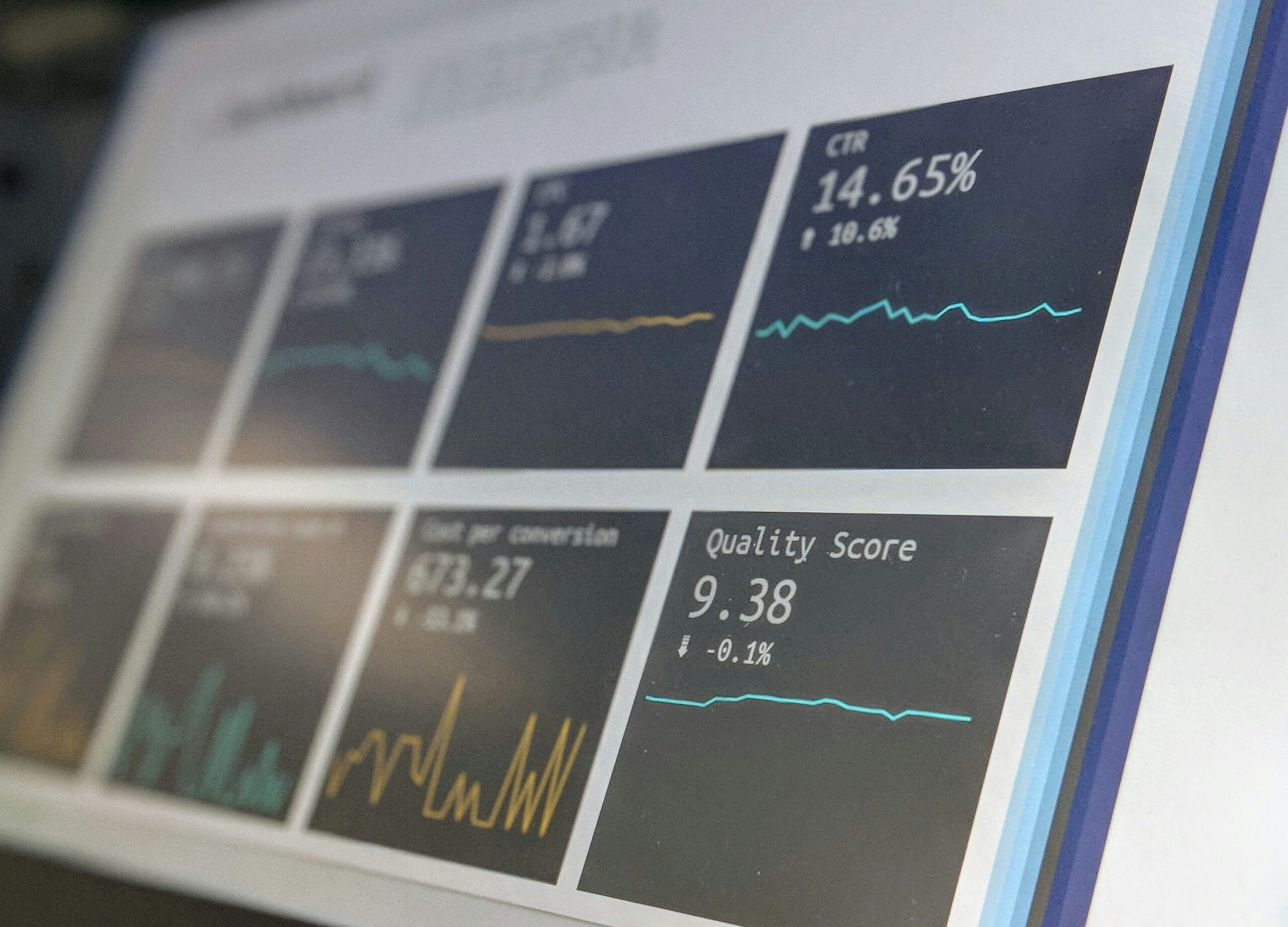Introduction to Chipotle’s Current Situation
In 2025, Chipotle Mexican Grill finds itself at a critical juncture. Recent headlines have been dominated by discussions regarding potential restaurant closures and speculation surrounding possible bankruptcies. These rumors have raised important questions about the overall health of the brand and its position within the fast-food industry. As one of the prominent players in the fast-casual dining segment, the state of Chipotle serves as an indicator of broader market trends affecting not only its own business but also other similar chains.
Fast-food chains are often vulnerable to a variety of economic factors, including shifts in consumer preferences, rising ingredient costs, and increased competition. Chipotle, known for its commitment to quality ingredients and sustainable farming practices, has faced challenges as the economic landscape evolves. The increasing importance of convenience and digital access has also compelled many chains to adapt their business models, sometimes leading to difficult decisions about store closures and restructuring efforts.
Furthermore, the aftermath of the COVID-19 pandemic continues to linger, with shifting consumer behaviors and an ongoing focus on health and safety influencing dining choices. In this context, Chipotle’s ability to navigate these challenges will be pivotal in determining its future trajectory. Stakeholders, including investors, employees, and customers, are keenly observing the brand’s strategies and operational responses to the current market pressures.
Understanding the dynamics of Chipotle’s current situation requires a comprehensive analysis of these various factors, which will be explored more deeply in the following sections. By examining the intricacies of Chipotle’s challenges and opportunities, we can gain insights into the potential pathways for recovery or further decline in an ever-competitive landscape.
Overview of Chipotle Mexican Grill
Established in 1993 by Steve Ells in Denver, Colorado, Chipotle Mexican Grill has rapidly ascended to prominence within the fast-casual dining sector. The company’s innovative approach centers around providing high-quality, customizable Mexican cuisine, rooted in the principles of sustainability and ethical sourcing. The restaurant chain emphasizes the use of fresh ingredients, which has resonated with health-conscious consumers and sets it apart from traditional fast-food establishments.
From its modest beginnings as a single restaurant, Chipotle has experienced significant growth. By employing a unique business model that focuses on simplicity and efficiency, the brand has successfully expanded its footprint across the United States and internationally. As of 2023, Chipotle operates over 2,800 locations worldwide, making it a leading player in the fast-casual category. The company’s focus on providing an engaging customer experience further solidifies its appeal, offering diners a fast yet personalized service, with the opportunity to tailor their meals according to their preferences.
Chipotle’s diverse menu features a range of offerings including burritos, tacos, and salads, allowing customers to enjoy their meals in various formats. The brand’s commitment to quality is evident in its sourcing practices, such as selecting ingredients that are free from artificial preservatives and flavors. This dedication to quality has fostered a loyal customer base, enhancing Chipotle’s position in a competitive market.
The fast-casual dining landscape is continually evolving, and Chipotle’s ability to adapt its offerings in response to consumer trends has been crucial to its success. However, challenges are emerging within the industry, including potential closures and financial difficulties. Understanding Chipotle’s history, growth, and market position will be vital in analyzing the implications of these challenges for the brand and its future.
Recent Financial Challenges Faced by Chipotle
In recent years, Chipotle has encountered a series of financial challenges that have markedly impacted its overall performance. Declining sales have surfaced as a critical issue, attributed in part to changing consumer behaviors and heightened competition in the fast-casual dining sector. Increasing numbers of consumers are opting for convenience-oriented meal solutions, such as meal kits and delivery services, which have affected traditional dining establishments like Chipotle.
Moreover, the rising operational costs have compounded these financial difficulties. Costs associated with labor, ingredients, and overhead expenses have surged, driven by inflation and supply chain disruptions that began in the wake of the global pandemic. Such rising costs have forced Chipotle to reevaluate its pricing strategy, leading to potential alienation of value-conscious customers, which further exacerbates declining sales.
External economic pressures, including fluctuations in the economy and changing consumer spending habits, also play a significant role in the company’s current financial landscape. The tightening of disposable incomes, combined with an increase in operational expenses, has created a precarious situation for Chipotle, making it pivotal for the organization to adapt to the evolving market demands and economic realities.
Additionally, emerging industry trends such as the growing emphasis on sustainability and healthy eating are reshaping consumer preferences. Chipotle, while traditionally positioned as a leader in fresh and organic food, must also contend with competitors that offer more innovative or trending food concepts. As such, failing to adequately address these trends risks further decline in customer patronage. The combination of these multifaceted challenges underscores the urgency for Chipotle to implement strategic initiatives aimed at achieving financial stability and growth within an increasingly competitive industry.
The Impact of the Pandemic on Chipotle’s Operations
The COVID-19 pandemic has significantly transformed the operational landscape of many businesses, with Chipotle Mexican Grill being no exception. As the world faced unprecedented challenges, consumer behavior underwent a dramatic shift. Many customers, initially hesitant to dine out due to health concerns, rapidly adapted to alternative dining solutions, leading to an accelerated demand for digital ordering and delivery services. This transition has posed both opportunities and challenges for Chipotle.
In response to the evolving landscape, Chipotle more aggressively embraced its digital platforms. The company reported a significant increase in online sales, especially during the initial surges of the pandemic. Digital sales became a crucial element of Chipotle’s strategy, with the implementation of curbside pickup and enhanced delivery options to maintain customer engagement without compromising safety. This pivot towards digital ordering has allowed Chipotle to sustain a degree of profitability amidst the wider industry turmoil.
However, despite these adaptations, the adverse effects of the pandemic cannot be overlooked. Chipotle faced operational difficulties stemming from temporary restaurant closures required to meet health guidelines. These closures not only led to a loss of revenue during critical periods but also strained relationships with employees and suppliers. Moreover, the increase in operational costs, due to enhanced safety protocols and the need for improved supply chain management, further impacted Chipotle’s financial stability.
Looking ahead, it is clear that the pandemic has permanently altered the operational framework of Chipotle. The company must continue to navigate these challenges while seeking to balance in-restaurant experiences with digital convenience. Adapting to these changes will be essential for Chipotle as it works to regain its footing and capture the evolving preferences of its customer base in a post-pandemic world.
Speculations on Chipotle’s Future: Bankruptcies and Closures
The current state of Chipotle has raised concerns among investors and consumers alike, primarily revolving around the potential for future bankruptcies and location closures. In recent months, several news articles have highlighted financial strains alongside fluctuating consumer preferences as contributing factors to these speculations. Economic shifts, largely attributed to inflation and changing dining habits, have forced businesses in the food industry to adapt rapidly, and Chipotle is no exception.
Experts in the food industry have provided varying opinions on the likelihood of Chipotle facing bankruptcy. Some analysts suggest that the company’s robust brand and loyal customer base may weather potential downturns. However, they caution that if financial metrics do not stabilize, particularly in light of increased operating costs and wage pressures, closures might become a reality in certain underperforming markets.
Additionally, Chipotle has made efforts to expand its footprint, with new locations cropping up across various regions. This aggressive expansion strategy has led to skepticism regarding the sustainability of all these locations amid an evolving economy. Recent press releases from the company indicate ongoing commitment to franchise growth; however, this ambitious approach can be met with challenges, especially when paired with decreasing location performance metrics.
Furthermore, some insiders have pointed to potential partnerships or strategic realignments within the industry as a pathway to mitigate losses and avert bankruptcy scenarios. Should these efforts come to fruition, they might provide a lifeline, potentially minimizing closures significantly. Nonetheless, market volatility remains a key concern, leaving stakeholders cautiously optimistic about Chipotle’s trajectory in the face of these uncertain conditions.
Consumer Reactions and Brand Loyalty
The potential closures and financial challenges faced by Chipotle have sparked considerable consumer reaction, reflecting a complex interplay of brand loyalty and customer sentiment. Many customers have developed a deep emotional connection with Chipotle, often viewing it as more than just a fast-casual dining option. This unique relationship has resulted in a committed fan base that actively engages with the brand through social media platforms and local communities, expressing their support during these turbulent times.
Brand loyalty plays a crucial role in the consumer response. Chipotle’s emphasis on quality ingredients and sustainability has fostered a reliable following among health-conscious diners, who value its commitment to natural foods. This dedication to quality has encouraged consumers to advocate for the brand, creating a vocal support system on social media networks. Customers are sharing their experiences and urging others to continue supporting Chipotle, highlighting the impact of community on brand perception.
Social media discussions surrounding Chipotle’s challenges reveal a mix of concern and optimism. Many users express their loyalty towards the brand by reminiscing about their experiences and emphasizing how Chipotle has become part of their daily lives. Conversations often transcend the immediate issue of closures, delving into broader discussions about the food industry, corporate responsibility, and the importance of authentic connections in the marketplace. The presence of user-generated content further amplifies brand perception, as consumers rally to defend Chipotle’s values and mission.
As Chipotle navigates these operational hurdles, understanding consumer reactions will be paramount. The emotional ties that customers have with the brand are significant and will shape its future trajectory. This relationship may either lead to a resurgence of loyalty during challenging times or impact the company’s recovery process if not adequately addressed. Acknowledging this dynamic is essential as the brand moves forward in addressing its financial status and potential closures.
Comparison with Competitors in the Fast-Casual Sector
Within the fast-casual dining sector, Chipotle faces notable challenges that are mirrored by its competitors such as Qdoba, Pancheros, and Moe’s Southwest Grill. These establishments have developed various strategies to navigate the increasingly competitive landscape and address issues like food supply chain disruptions and fluctuating customer preferences. An examination of these strategies illuminates potential pathways for Chipotle as it confronts its operational hurdles in 2025.
Qdoba, for example, has recently focused on menu diversification while enhancing its customer experience through promotions and loyalty programs. By continually updating its offerings, Qdoba aims to attract a broader audience, tapping into food trends such as plant-based and health-conscious choices, which resonate well with today’s diners. This adaptive approach has allowed Qdoba to maintain a strong foothold in the fast-casual segment, emphasizing the importance of innovation in retaining customer interest.
Similarly, Pancheros has adopted a hyper-local sourcing strategy, reducing reliance on broader supply chains vulnerable to disruptions. This method not only secures freshness but also fosters community connections, which in turn can cultivate brand loyalty. With a focus on high-quality ingredients and a customizable menu, Pancheros positions itself as a viable alternative for consumers who prioritize freshness. Such strategies prove that emphasizing the quality and origin of ingredients can serve as significant differentiators in the crowded fast-casual space.
Moe’s Southwest Grill has capitalized on creating unique dining experiences through vibrant restaurant atmospheres and value-added promotions, thereby enhancing customer engagement. Their focus on community events and in-store experiences reflects an important trend in the industry—immersion in the customer experience. This strategy fosters a sense of belonging among patrons, driving repeat visits and positive word of mouth.
In summary, Chipotle can draw valuable lessons from these competitors’ responses to current challenges. By adapting strategies that prioritize innovation, quality, and community engagement, Chipotle has the potential to align itself more closely with changing consumer preferences and safeguard its position in the fast-casual dining sector.
Possible Strategies for Recovery and Growth
In light of the financial challenges Chipotle has encountered, it is essential for the brand to adopt a multi-faceted recovery strategy aimed at revitalizing its market presence and ensuring long-term success. One potential avenue for growth lies in menu innovations. Chipotle could invest in research and development to introduce limited-time offerings or seasonal ingredients that captivate both returning and new customers. Limited releases have the potential to create excitement around the brand while showcasing its commitment to culinary creativity.
Another critical aspect of recovery could revolve around bolstering digital marketing efforts. In an increasingly digital landscape, Chipotle can harness social media platforms and targeted advertising to reach a broader audience. Engaging content that highlights the brand’s sustainability initiatives, food quality, and community involvement could resonate with consumers who prioritize corporate responsibility. Additionally, enhancing user experience through an optimized mobile app could streamline ordering, leading to increased customer loyalty and retention.
Expansion plans are also instrumental in Chipotle’s strategy for recovery. Exploring new markets, particularly in international locations or suburban areas where competition is lower, could provide significant growth opportunities. Moreover, partnering with delivery services to reach customers who prioritize convenience may enhance sales performance.
Cost management will play a crucial role in navigating fiscal uncertainties. Streamlining operations through the adoption of efficient supply chain practices could lead to reduced overheads while maintaining product quality. Implementing training programs aimed at enhancing employee productivity can also translate into better customer service and increased sales.
Lastly, engaging with the local community through initiatives such as charitable partnerships or sponsorships can reinforce customer loyalty and brand perception. By fostering strong community ties, Chipotle can position itself as not just a restaurant, but a valuable member of each neighborhood it serves.
Conclusion: What Lies Ahead for Chipotle?
The journey of Chipotle Mexican Grill through the challenges of 2025 has been marked by a series of closures and bankruptcy discussions, which have raised questions regarding the brand’s future. However, as we assess the current landscape, several critical factors emerge that may shape the path ahead for Chipotle. First, it is essential to recognize the company’s commitment to sustainability and quality ingredients. By prioritizing ethically sourced foods, Chipotle has maintained a loyal customer base, which may serve as a foundation for recovery.
Furthermore, the adaptation of operational strategies in response to economic pressures will be crucial. The brand has indicated a willingness to explore new technological advancements, such as efficient ordering systems and improved delivery options, which are increasingly vital in today’s market. By leveraging these innovations, Chipotle can enhance customer experiences and increase revenue streams, potentially easing the financial strain faced by the company.
However, the overall economic environment cannot be ignored. Fluctuations in the economy, competition from fast-casual dining options, and changing consumer preferences may pose significant challenges. Should these factors conspire against Chipotle, the repercussions could extend beyond mere financial setbacks, leading to a major failure if not managed effectively. Therefore, it is imperative that the management of Chipotle remains vigilant and responsive to market dynamics.
In conclusion, while the state of Chipotle presents a mixed outlook with undeniable challenges, the company’s resilience, emphasis on quality, and progressive operational strategies suggest that a path forward is possible. Whether this journey will lead to a robust recovery or necessitate more drastic measures remains to be seen. Chipotle’s ability to adapt will ultimately dictate its future in the competitive culinary landscape.


